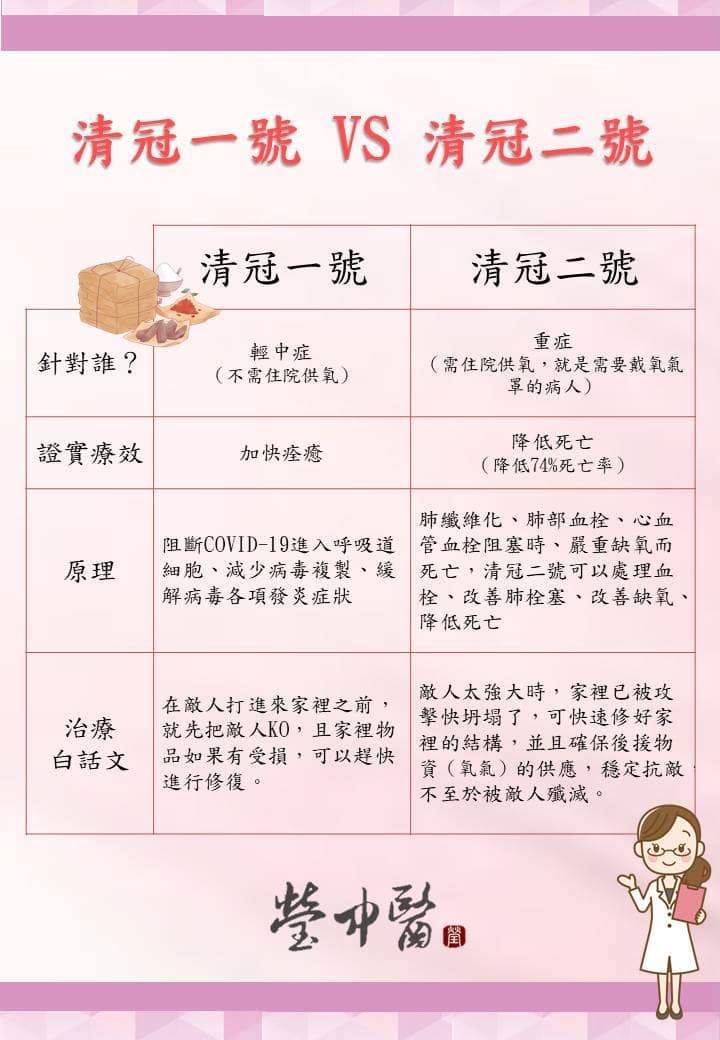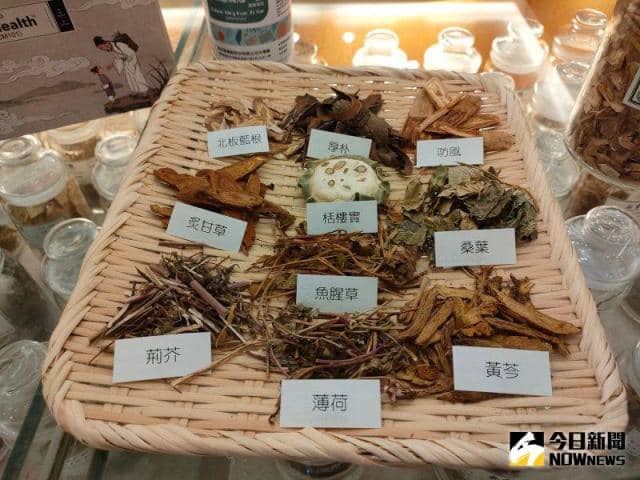清冠一號、清冠二號,差別在哪?

清冠一號 vs. 清冠二號
適用對象、原理、證實療效

【 清冠一號 】
族群:「輕中症」不需住院供氧的患者
證實療效:加快痊癒
原理:阻斷COVID-19病毒進入呼吸道細胞、同時減少大量複製、也同時緩解病毒引發的各項發炎症狀
治療白話文:在敵人打進來家裡的時候、敵人還沒進來就先把敵人KO、並且如果家裡物品有受傷、趕快修理受傷處
【 清冠二號 】
族群:「重症」(住院供氧的患者,就是需要戴氧氣罩的病人)
證實療效:
1.降低死亡(臨床研究發現可降低74%死亡率)
2.改善缺氧
3.治療肺栓篩
4.治療較難治療的變種病毒
原理:已經是重症、肺部血管會出現小血栓、或肺泡已經受損,當連鎖反應、又造成心臟血管血栓阻塞,造成肺細胞嚴重損傷、導致肺纖維化、嚴重缺氧、而造成生命危險,清冠二號可以處理血栓、改善肺栓塞、改善缺氧、抑制變種病毒,讓死亡率下降
治療白話文:在敵人太強大的時候、家裡已經被攻擊快坍塌了,可以快速修理好家裡的結構、並且確保後援物資(氧氣)的供應穩定,穩定抗敵,不至於被敵人殲滅
備註:清冠二號目前市面上還沒有辦法買的到,但大家不用太過緊張,除非你是重症、清冠一號還是可以治療的很順利喔!
// 國際期刊 //
以下引用 國際學術期刊「Pharmacological Research」內容:
(公信力很好的國際醫學期刊,在該領域權威程度排名前5%,IF=10.334,也附上英文版給有興趣的大家參考)
國家中醫藥研究所研究結果,在30天觀察期內,
·接受清冠一號治療的輕、中症患者均未轉重症
·僅接受西醫常規照護組則有14例(9.27%)轉重症
·重症患者中,西醫常規照護組有27人(21.95%)死亡
·接受清冠二號治療組僅7人死亡(5.69%),顯著降低74%死亡率

研究文章名稱:
Curbing COVID-19 progression and mortality with traditional Chinese medicine among hospitalized patients with COVID-19: A propensity score-matched analysis
Background
Viral- and host-targeted traditional Chinese medicine (TCM) formulae NRICM101 and NRICM102 were administered to hospitalized patients with COVID-19 during the mid-2021 outbreak in Taiwan. We report the outcomes by measuring the risks of intubation or admission to intensive care unit (ICU) for patients requiring no oxygen support, and death for those requiring oxygen therapy.
Methods
This multicenter retrospective study retrieved data of 840 patients admitted to 9 hospitals between May 1 and July 26, 2021. After propensity score matching, 302 patients (151 received NRICM101 and 151 did not) and 246 patients (123 received NRICM102 and 123 did not) were included in the analysis to assess relative risks.
Results
During the 30-day observation period, no endpoint occurred in the patients receiving NRICM101 plus usual care while 14 (9.27%) in the group receiving only usual care were intubated or admitted to ICU. The numbers of deceased patients were 7 (5.69%) in the group receiving NRICM102 plus usual care and 27 (21.95%) in the usual care group. No patients receiving NRICM101 transitioned to a more severe status; NRICM102 users were 74.07% less likely to die than non-users (relative risk= 25.93%, 95% confidence interval 11.73%-57.29%).
Conclusion
NRICM101 and NRICM102 were significantly associated with a lower risk of intubation/ICU admission or death among patients with mild-to-severe COVID-19. This study provides real-world evidence of adopting broad-spectrum oral therapeutics and shortening the gap between outbreak and effective response. It offers a new vision in our preparation for future pandemics.
瑩中醫 祝福大家一起預防COVID-19由內而外健康又漂亮!


